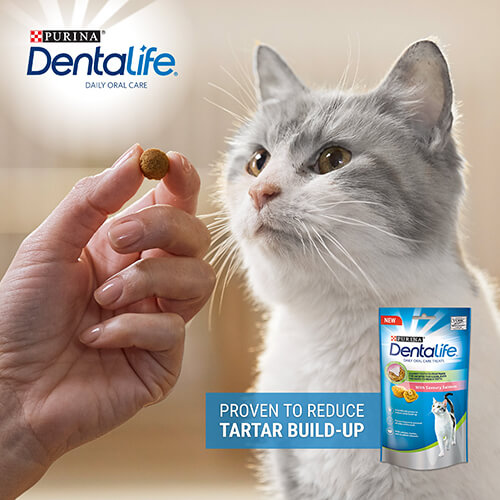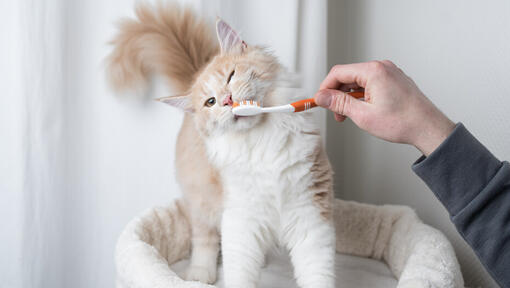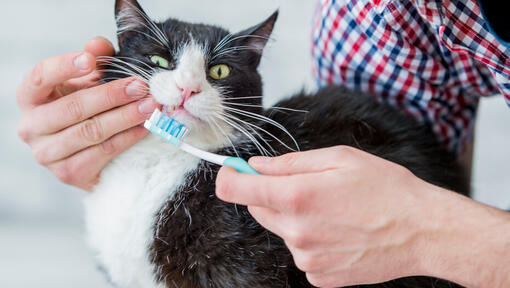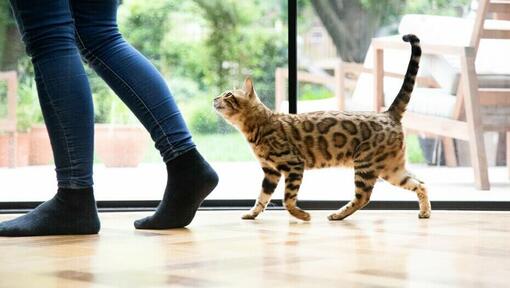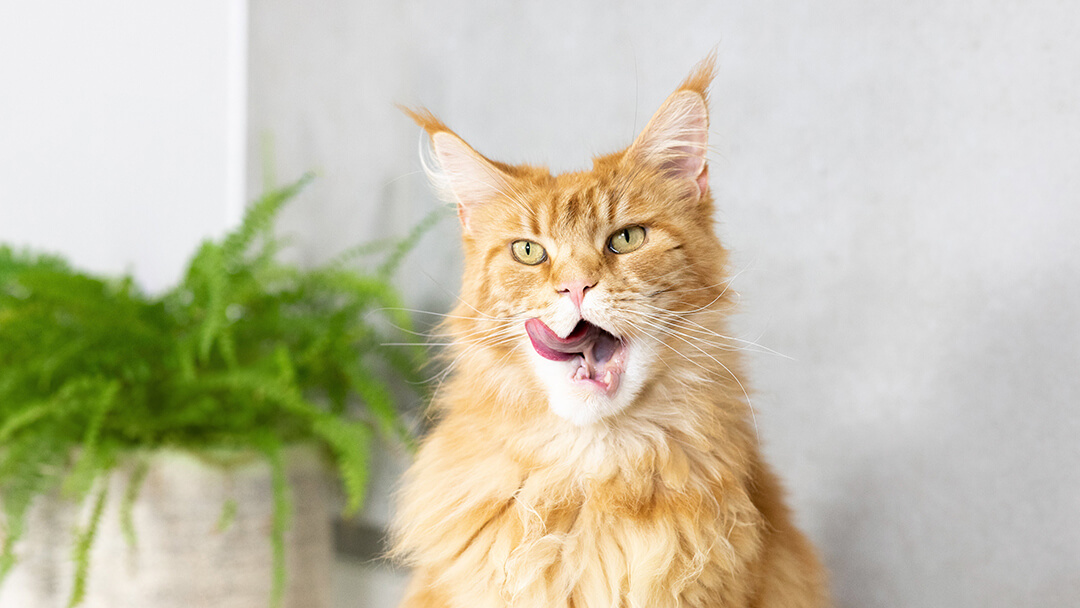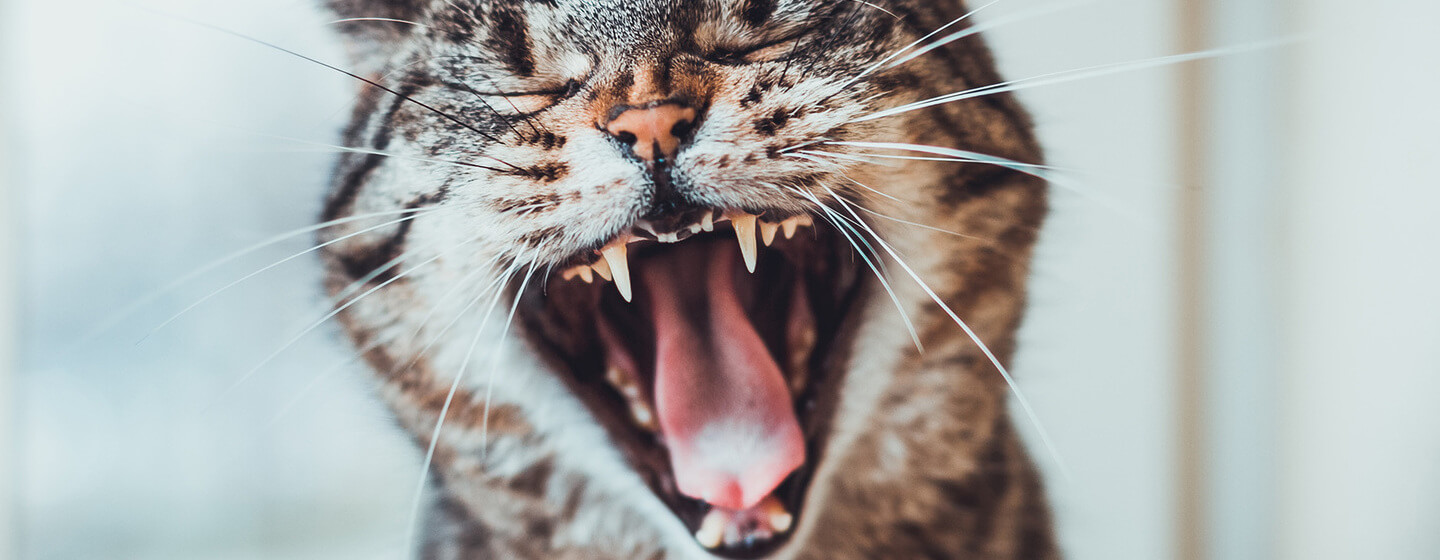
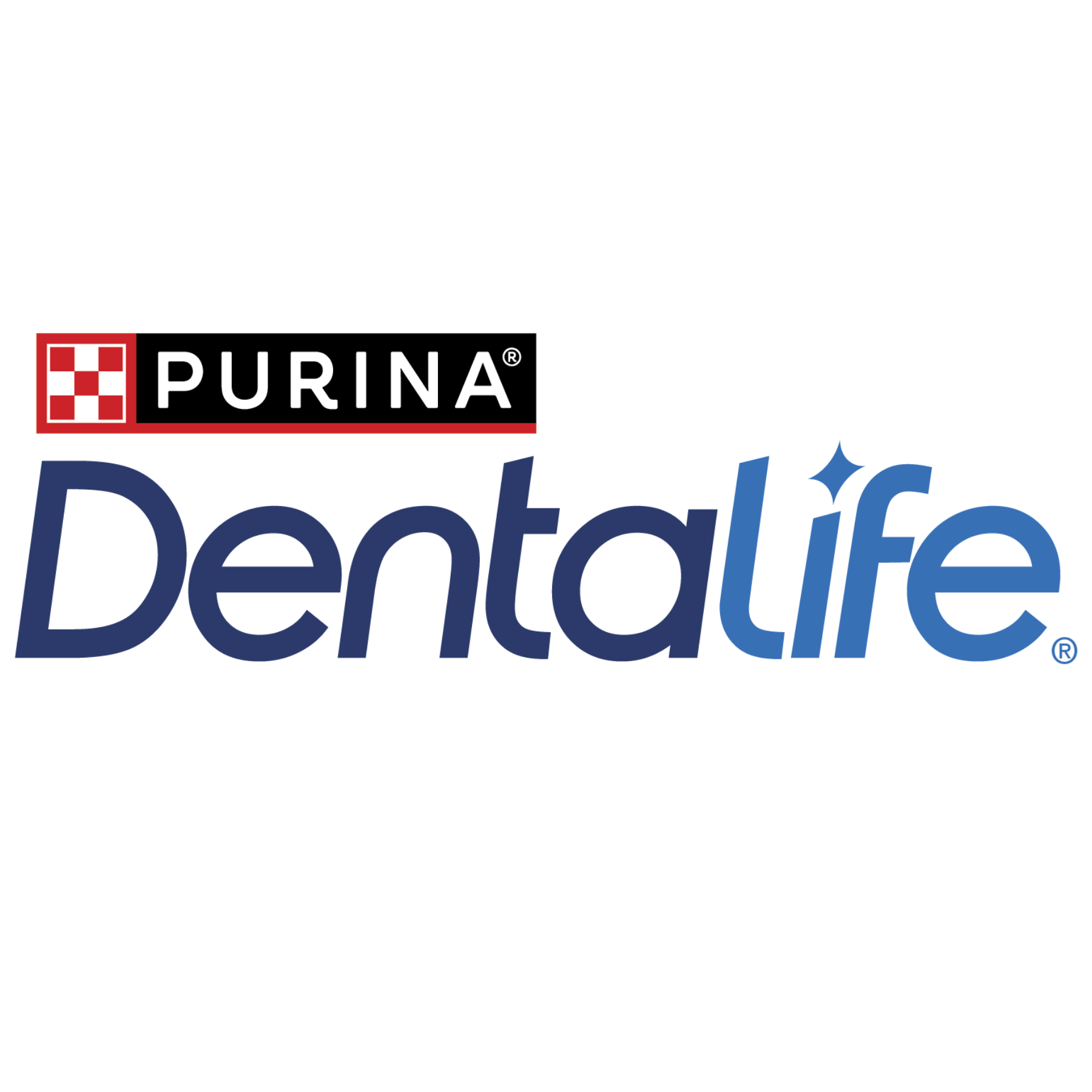
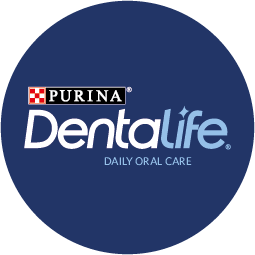
Did you know that eight out of ten cats over the age of three have tooth and gum problems? Just like our own teeth, your cat’s teeth accumulate plaque and if this isn’t kept under control, it can lead to tartar and even periodontal disease. You know how important it is to look after your own teeth, so make sure you give that same care and attention to your furry friend’s cat dental care.
Dental disease in cats
Warning signs of dental problems
Cats accumulate plaque on their teeth just like we do. If left, this hardens to form tartar, which irritates the gums causing gingivitis and can ultimately lead to tooth loss. If your cat has severe dental disease and it’s not dealt with, the build-up of the bacteria in the mouth can lead to further complications such as heart and kidney issues. So what signs do you need to look out for and how can you help to keep your feline friend’s teeth in tip top condition?
The first unusual thing you’ll probably notice is your cat’s bad breath – it can be hard to ignore! This is a sign of advanced dental disease. Other symptoms include reddened gums, yellowish-brown tartar on teeth and drooling.
Have you noticed your cat dropping food from their mouth, chewing only on one side or losing weight because they’re unable to eat?
If so, they could have a nasty case of gingivitis. Sometimes cats with severe dental disease don’t show any signs at all – typically cats don’t like to make a fuss if they feel under the weather so they may not give you any hints that anything hurts.
That’s why it’s so important for you to check your cat’s teeth and why dental check-ups at the vet are vital, particularly for older cats.
If you notice any problems, take your cat along to the vet where they will probably recommend specialist dental care to remove any loose or damaged teeth and to de-scale using ultra-sonic vibration, which gently removes plaque and tartar without damaging the surface of the teeth.
Brushing your cat’s teeth
Brushing cat's teeth is a great way to look after your pet's pearly whites, and avoid dental disease. Your vet may advise that you wait a while after any professional treatment before you try brushing their teeth yourself. Your cat loving friends might laugh at the idea of brushing cat's teeth but, with time and patience, it is possible – although it may take a little getting used to.
Ideally you should try to introduce dental care at a young age. Although kitten's milk teeth shouldn't be brushed, kittens should get used to having their teeth touched from early on to prepare them for a life of clean teeth.
If your cat is new to the idea of dental care, here are some tips to help you start:
- Ask your veterinary nurse to show you how to brush your cat’s teeth correctly.
- Buy toothpaste that’s specially formulated for cats, with flavours like malt or chicken – yum! Just as you wouldn’t want to use cat toothpaste, your cat should never use human toothpaste.
- Start by putting this cat toothpaste on your finger and offering it to your cat to lick. Do this daily for a few days while they get used to the flavour and texture. Whatever you do, don’t put your fingers in your cat’s mouth – that can only end in trouble.
- Next, get a toothbrush that’s designed for cats and, if you have more than one cat, buy one per pet to avoid transmitting any bacteria. You can use a baby’s toothbrush as these are suitably soft but avoid ‘finger brushes’ as they can be accidently bitten – with your finger inside!
- Choose a time that you can stick to each day to help make tooth brushing part of your pet’s normal routine. It’s important that you pick a time when you’re both relaxed so that both you and your cat are calm and comfortable.
- Have your cats back to you when you start brushing as they may try and back away from you; this is also a less confrontational approach.
- If your cat tries to push you away with their paws, you may need someone to help you hold them, but it’s better to try to slowly acclimatise your cat by repeatedly touching their mouth and head, reassuring them with quiet, soothing words and offering rewards for several days. There’s no great rush to start brushing – what’s more important is that they learn to trust the toothpaste, toothbrush and you.
- Slowly and gently pull back your cat’s lips and simply touch their teeth with the cat toothbrush at first, then stop and reward your cat.
Again repeat this daily for several days. Only when they’re completely comfortable with this should you gently start tooth brushing by applying the bristles to the teeth at a 45-degree angle, reaching the tooth surface and just beneath the gum margin, but not directly on the gums.
- Start by doing this very briefly (10 seconds or so) before rewarding them for their patience.
Cat dental care products
The simple truth is that some cats find it tough to get along with tooth brushing, however hard you try. Rather than continue to cause your cat stress, talk to your vet about other products you can use, such as oral hygiene gels. These contain enzymes that inhibit the bacteria that are responsible for plaque formation. You can give these gels to your cat directly or mix them with their food.
Cat dental chews are also available, as well as special dry food diets that contain fibre that scrapes the surface of your cat’s teeth as they chew. Some cats enjoy playing with chew toys, and these can help reduce the build-up of plaque but don’t rely on them – the best dental care is giving your cat a healthy balanced diet and regular tooth brushing.
It’s a good idea to introduce home cat dental care to keep your cats mouth as happy and healthy as possible throughout their life. With patience and persistence most cats will learn to tolerate some level of tooth cleaning, whether it’s brushing their teeth or hygiene gels.
Dentalife dental cat treats
Our Dentalife dental cat treats can be given daily as part of your cat’s tooth care routine. With delicious flavours like salmon and chicken, these treats have been scientifically designed for a thorough clean, thanks to the crunchy and porous texture.
As an added benefit, our dental cat treats can even prevent plaque and tartar build up as they can clean even the hard to reach back teeth which are most prone to developing these problems.
Start your cat on a daily oral care routine with Dentalife® cat treats – the crunch that cleans!
Shop the Dentalife Cat range:
Related articles by Dentalife


